
Before the COVID-19 pandemic, there was already a growing trend of data center managers turning to business intelligence and analytics to provide the information they needed to manage and optimize their increasingly complex data center environments. Now, with many data center managers under orders to shelter-in-place and needing to minimize the number of on-site staff, having the ability to effectively manage data centers remotely is more important than ever.
Dashboards are a key component of remote data center management. Having focused dashboards, each with several metrics and Key Performance Indicators (KPIs) for your top objectives, accelerates data analysis and improves collaboration and productivity by displaying only the data you need to succeed for a particular goal. Dashboards also help break down organizational silos by encouraging information sharing across functional teams. Everyone knows to visit their dashboard for the latest information, and everyone sees the same data which boosts transparency and accountability.
The most useful KPIs will depend on your specific objectives and questions that need answers. However, based on our experience with hundreds of customers participating in our global user groups, we've consolidated feedback on what data matters the most to modern data center managers. The following nine dashboards and their associated KPIs have proven the most critical for successful remote data center management.
- Space. Space is often one of the biggest limitations in data center management, and intelligent space capacity planning is key to navigating data center expansion and optimization. A dedicated dashboard on data center space will provide the most critical information you need to know your capacity to deploy new devices, use your space efficiently, and defer costly investments in new data centers. Important metrics to track include available floor and cabinet space remaining, available space by rack unit size, available rack units over time, server/network blade chassis slot usage, and rack unit used by rail.
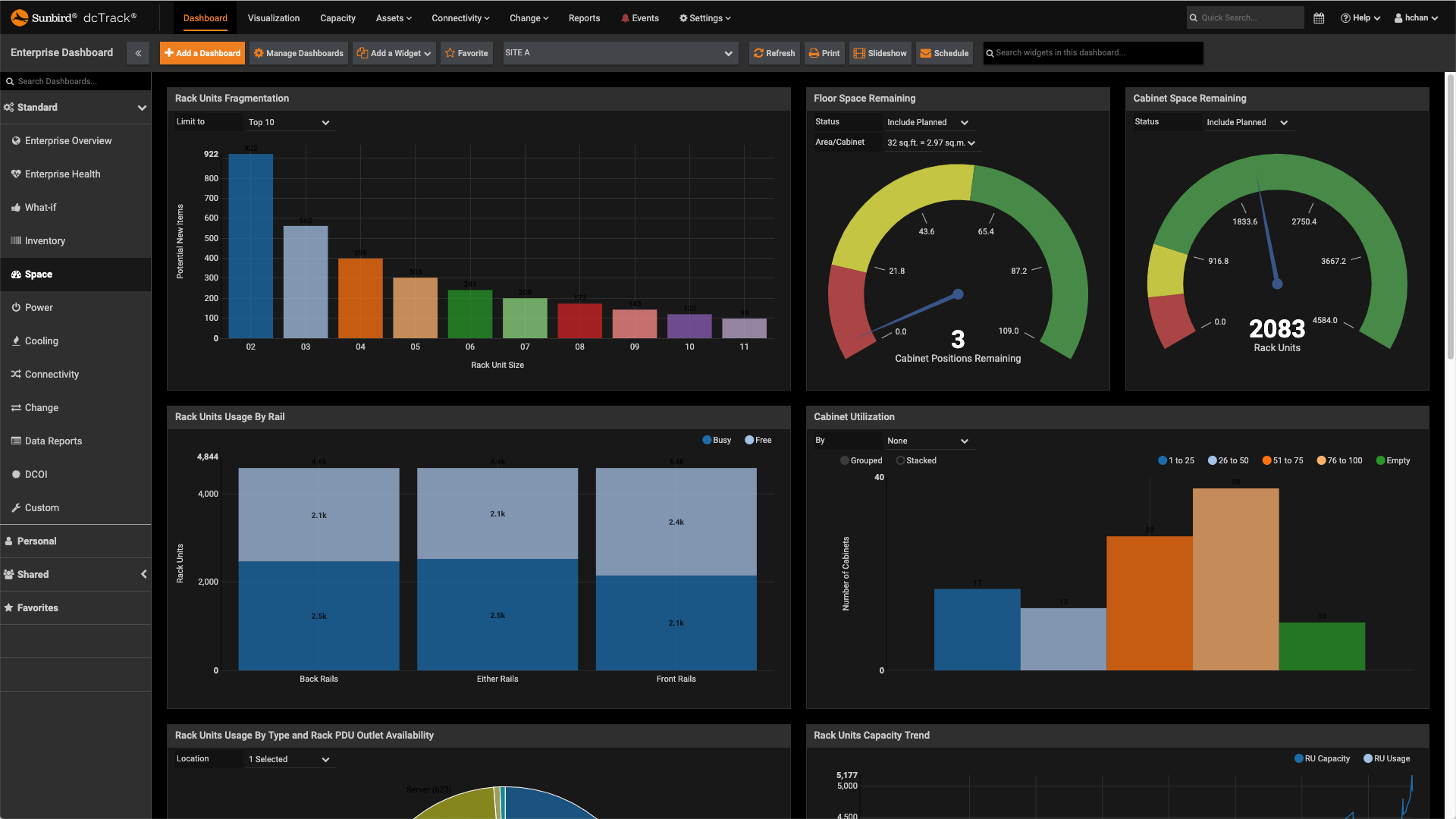
- Inventory. Most data centers have a wide variety of assets, but some organizations still rely on error-prone and inaccurate manual processes and outdated spreadsheets to track their asset inventories. An inventory dashboard provides a reliable, at-a-glance view of what assets you have, how many you have, and the current status of each asset so you can easily and accurately plan for maintenance and provisioning. On your dashboard, be sure to track asset age, deployment trends, and available inventory of devices and field replaceable units.
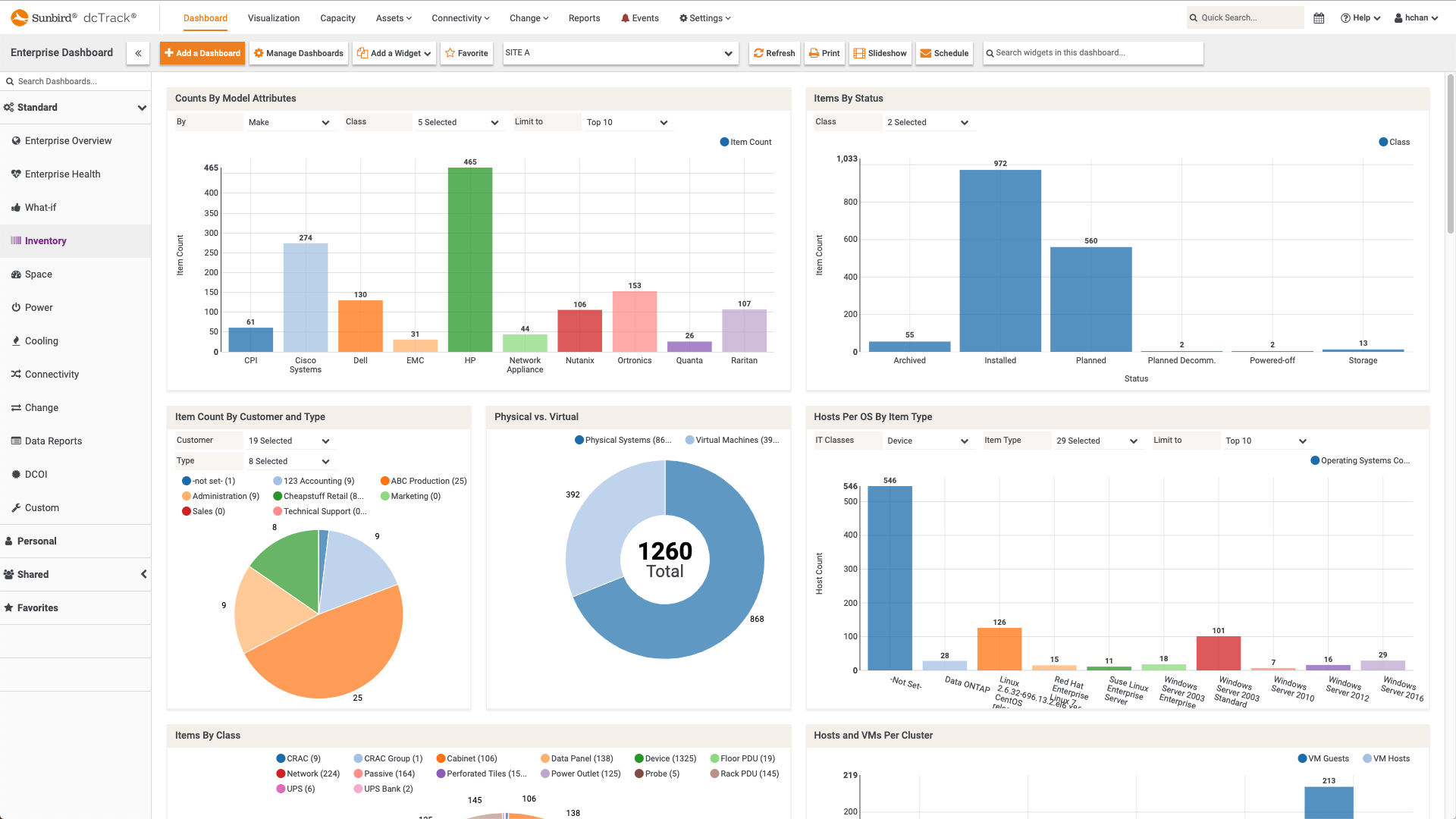
- Connectivity. In addition to tracking the assets in your data center, you need a connectivity dashboard for a singular view of data and power port capacity to ensure you are able to connect your assets in your current data center environment. Achieve optimal resource utilization, ensure redundancy, and successfully plan and implement projects by monitoring cabinets with most free data and power ports, data ports usage per connector type, assets per connected power supplies, data and power ports usage per port properties, and data and power ports usage over time.
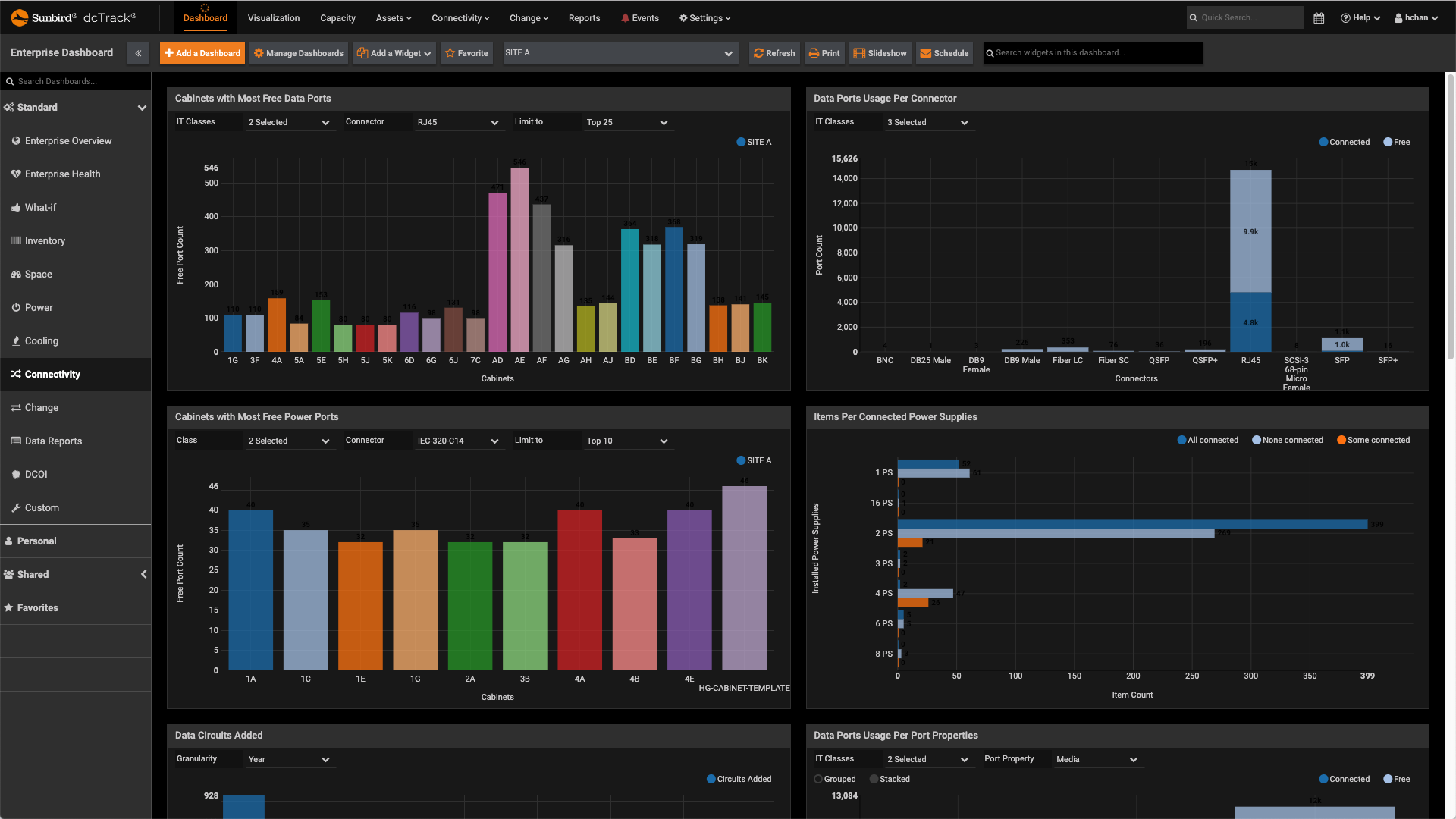
- Change. A change management dashboard simplifies the management of moves, adds, and changes, helps you maintain SLAs, and drives efficiency and productivity of data center staff. In one single dashboard, you can have complete visibility into how much work is being done in the data center, what is being done and by who, and what progress is being made on change requests. In your dashboard, track change requests by user, stage, and type, change requests by length of time per stage, completed requests over time, and changes per person. Monitor and manage your requests from creation to approval to ensure work order quality and transparency while improving staff efficiency through improved collaboration.
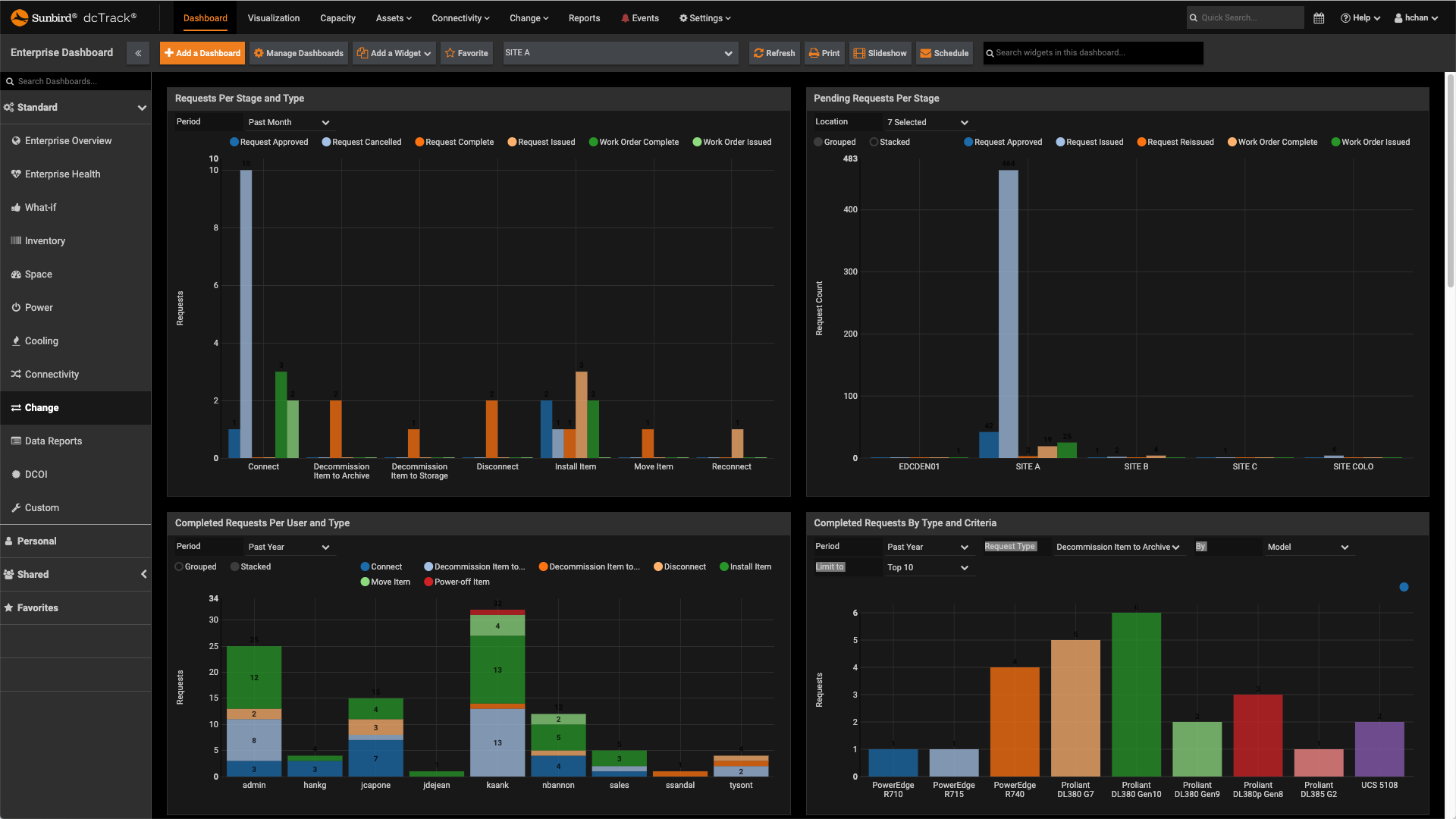
- Power. Ensuring mission-critical systems are running, power capacity is available for those systems, and redundancy is clear are key components of data center management. A dedicated power dashboard will help you improve uptime and efficiency with KPIs like power capacity remaining, power trends by cabinet, and power chain breaker utilization.
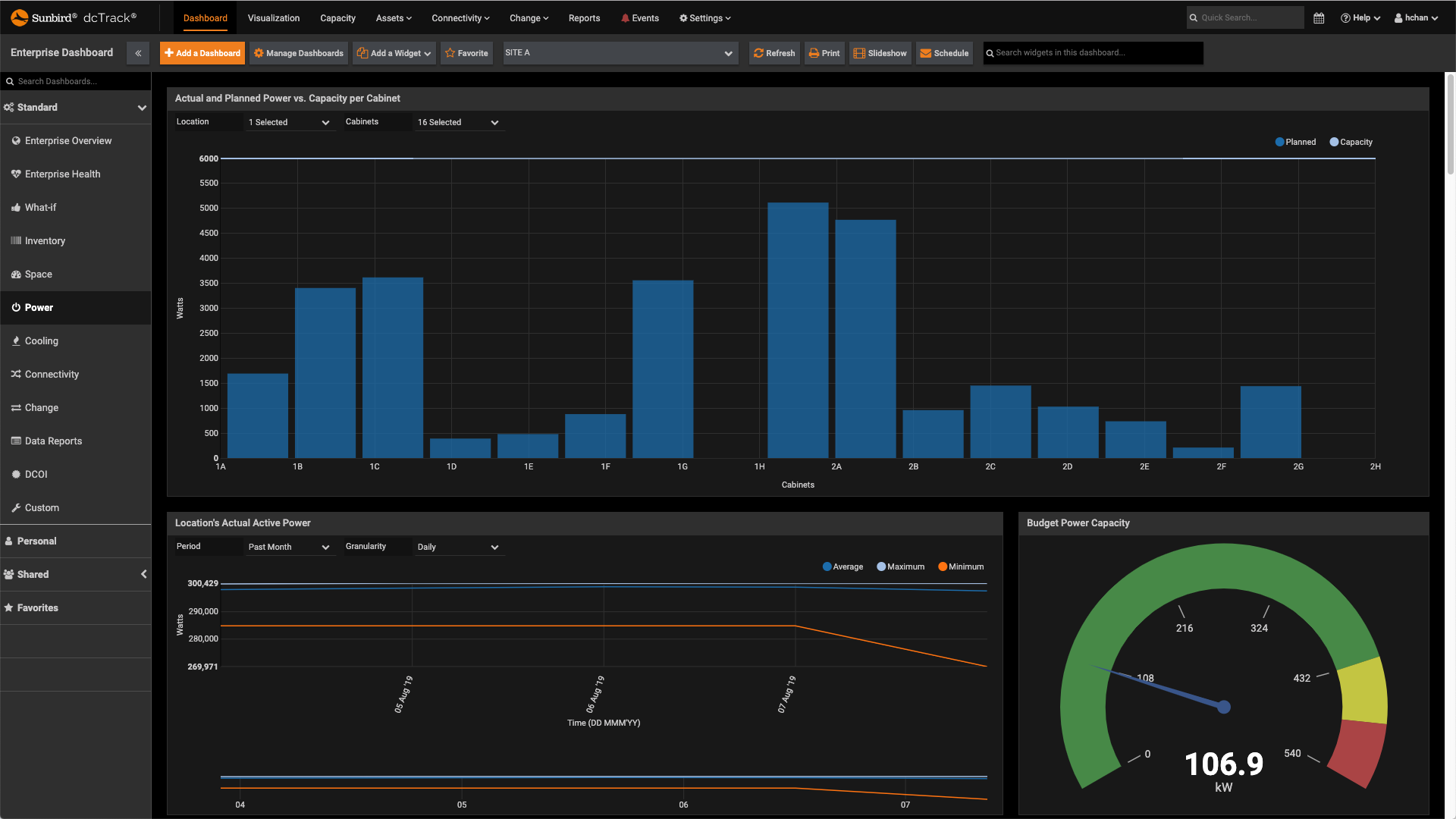
- Environment. Data center mangers need to make sure that their equipment is operating safely within manufacturer or ASHRAE guidelines to avoid downtime or overcooling. By monitoring important environment metrics such as latest temperature per cabinet, delta-T per cabinet, and maximum temperature per cabinet, you can ensure optimal conditions, increase energy efficiency, and identify hot spots.
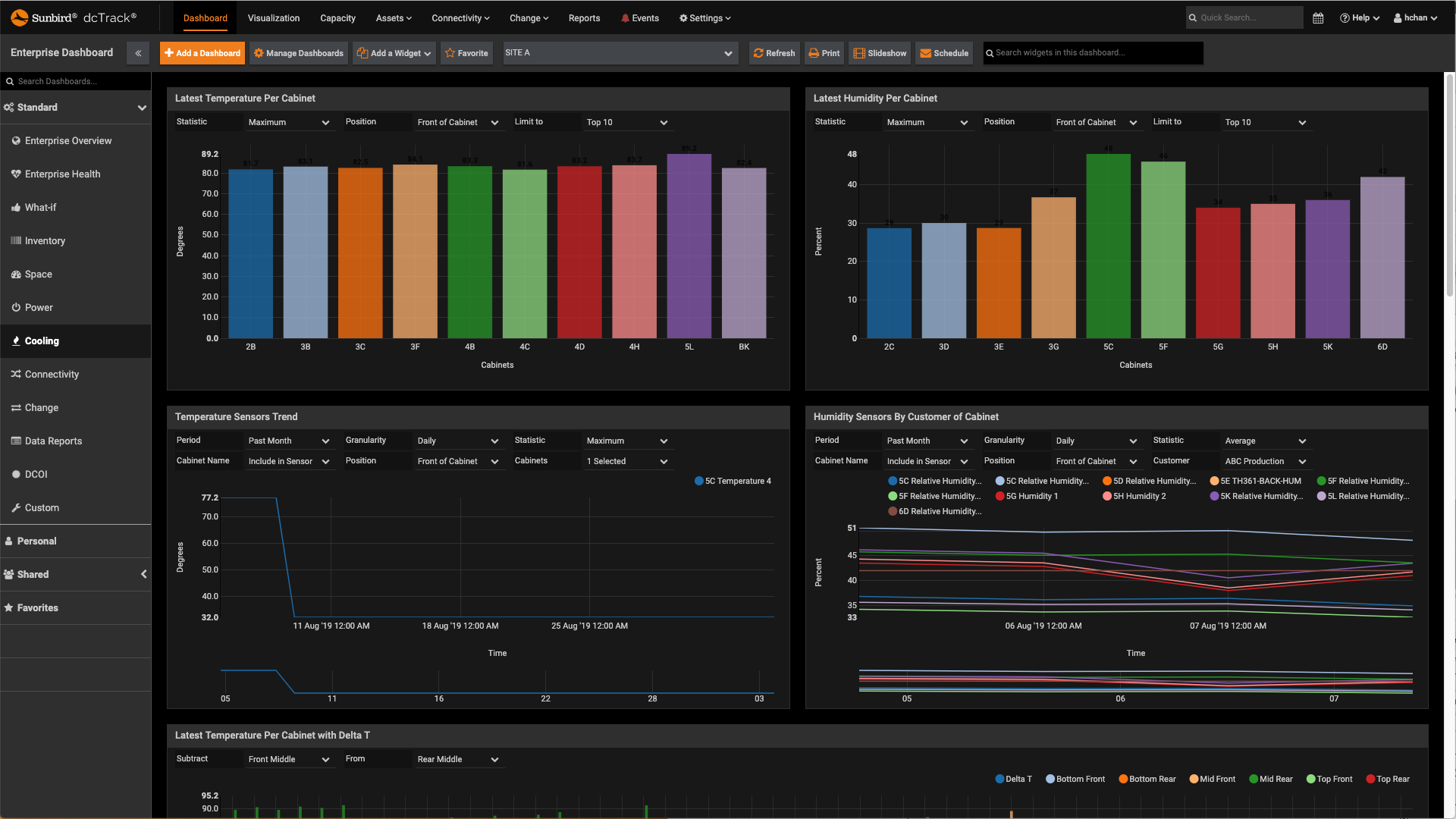
- Enterprise Health. For dynamic views of an enterprise's data center health on a single pane of glass, you need an enterprise health dashboard. In such a dashboard, each location is represented by a color-changing tile based on live data. Capacity and health status are shown with easy-to-understand red/yellow/green indicators along with important information such as critical events, temperature, additions and decommissions, power load and capacity, and number of staff.
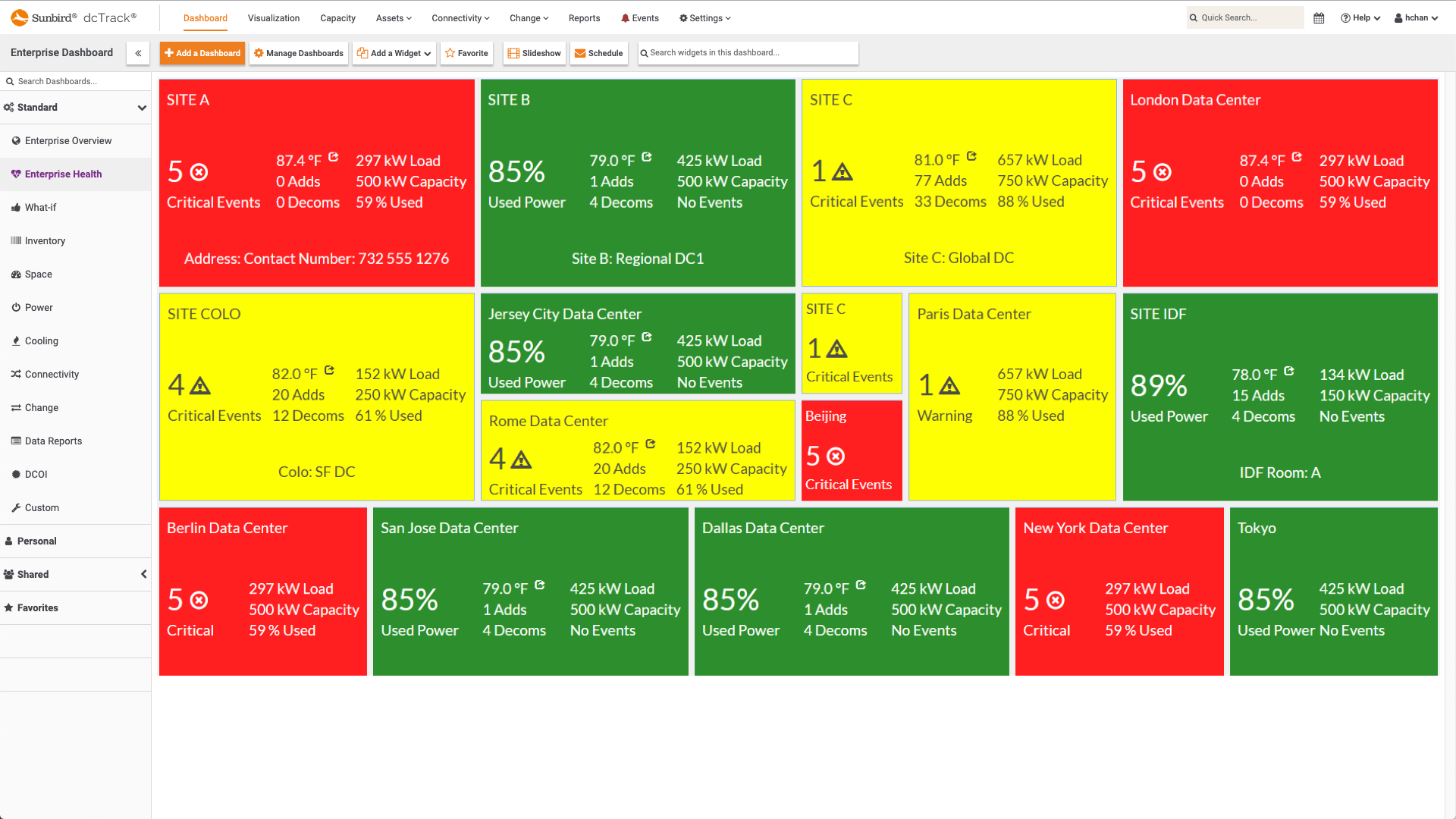
- Enterprise Overview. For data on all locations or sites across your entire enterprise, consider an enterprise overview dashboard. Monitor KPIs like floor space capacity, data port usage by connector, stranded power, cabinet space capacity, average temperature, historical item counts, pending requests per stage, budget power capacity, and total actual active power to easily compare and contrast all your locations and identify opportunities to increase efficiency, improve utilization, and improve productivity.
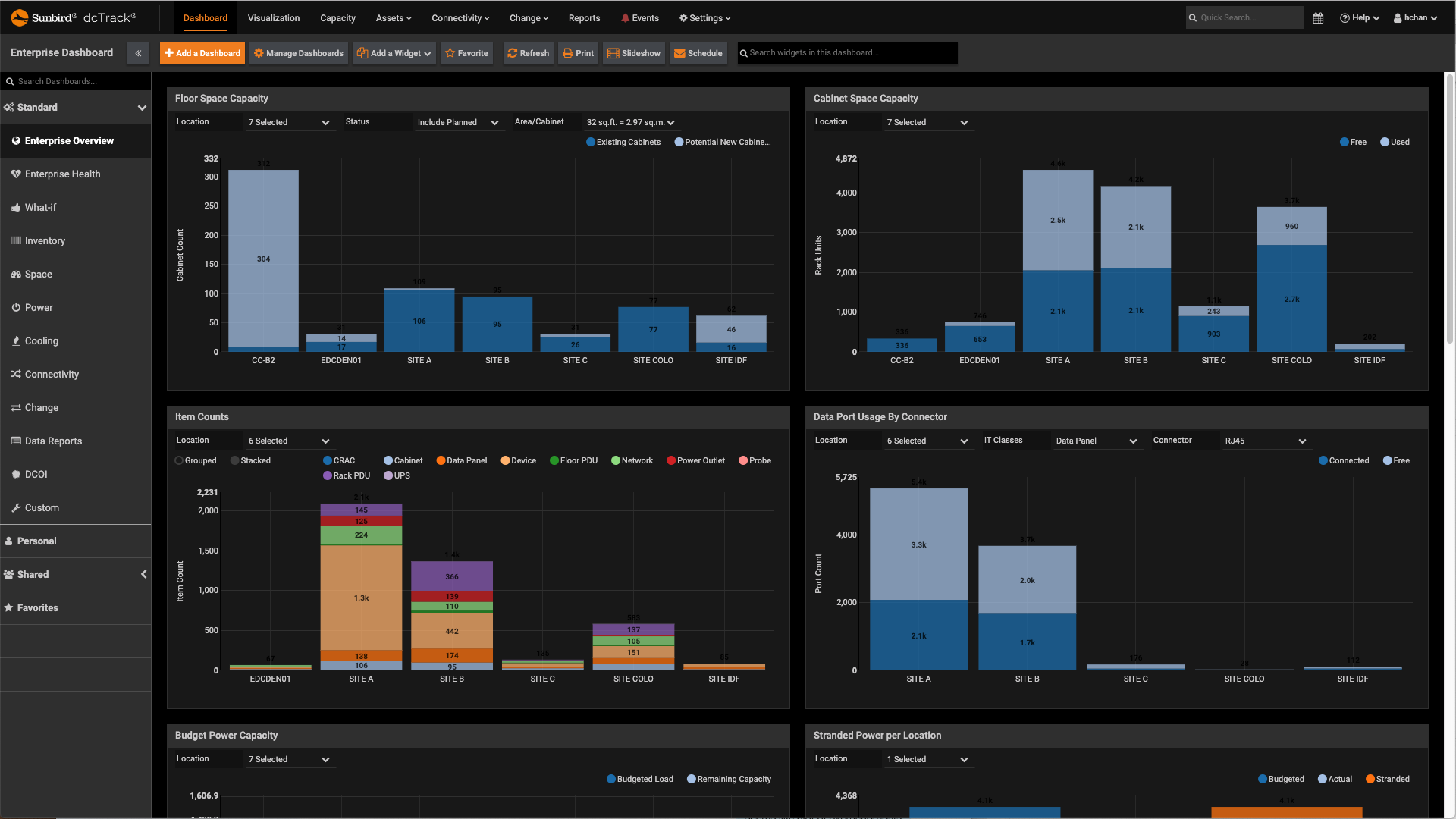
- What-If. To know the potential impact of a change in your data center on a per-project basis, you'll need a what-if dashboard. Easily identify how power budget capacity, rack units space capacity, and power distribution and redundancy will be affected by additions and decommissions in your data center. With this information, you can identify stranded space and power capacity and understand if additional resources are necessary in order to meet demand, or if you can defer capital expenditures.
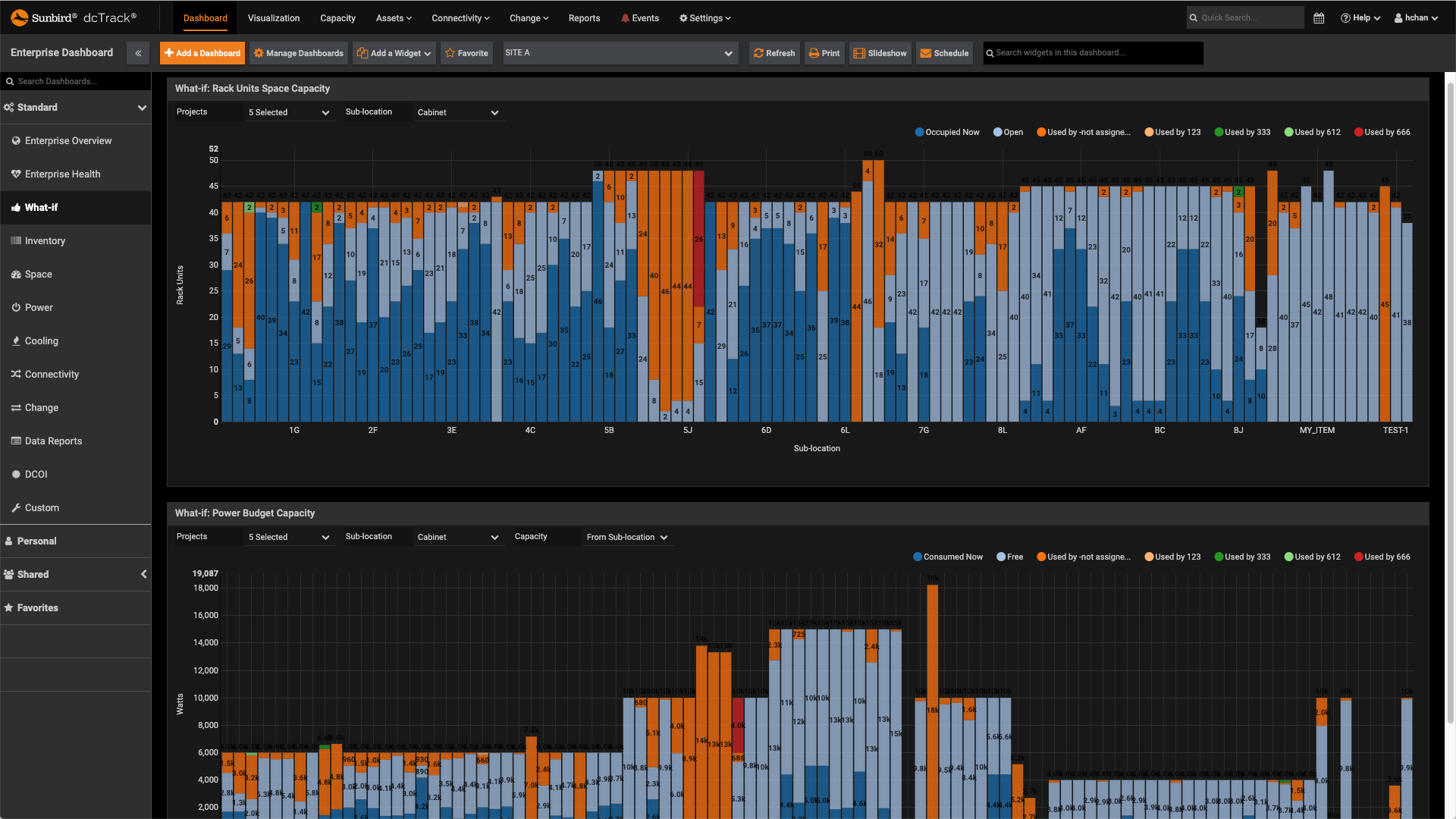
DCIM Software: Remote Data Center Management on Steroids
Many data center managers typically already have dashboards, but each one likely pulls data from disparate systems or spreadsheets. Storing data across multiple, separate sources without seamless integration leads to inaccuracies and errors and reduces your ability to effectively and efficiently manage your data center remotely. If your data is limited, out of date, or untrustworthy, you can not rely on it to make the most informed, data-driven decisions and may need to travel to the data center to confirm your information.
Data Center Infrastructure Management (DCIM) software make remote data center management easy by providing a single source for all your data center data that is updated and visible in real time. DCIM makes it easy to identify and eliminate inefficiencies like overprovisioning and stranded capacity and to avoid unexpected and unnecessary expenses.
Sunbird's second-generation DCIM solution provides actionable insights immediately with zero configuration required. With Sunbird, you can leverage over 100 interactive dashboard widgets out of the box. Filter data for faster, pinpointed analysis or export for use in a third-party system. Secure, shareable links respect role-based, granular permissions while helping you drive a culture of data collaboration around common data center KPIs.
Want to see how Sunbird's zero-configuration analytics and business intelligence dashboards provide remote data center management on steroids? Take a free test drive today!




























